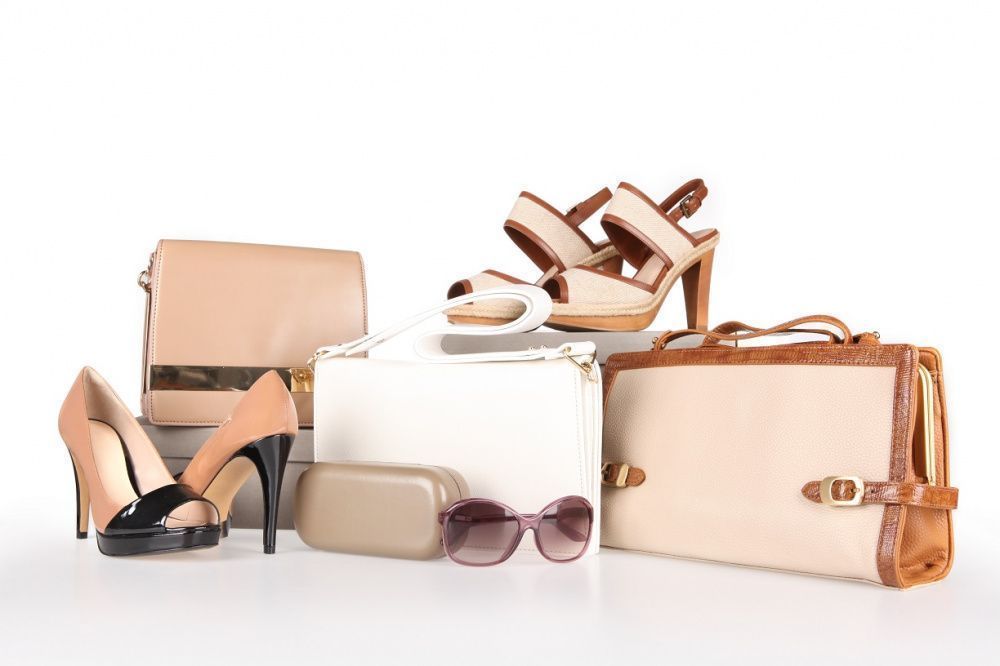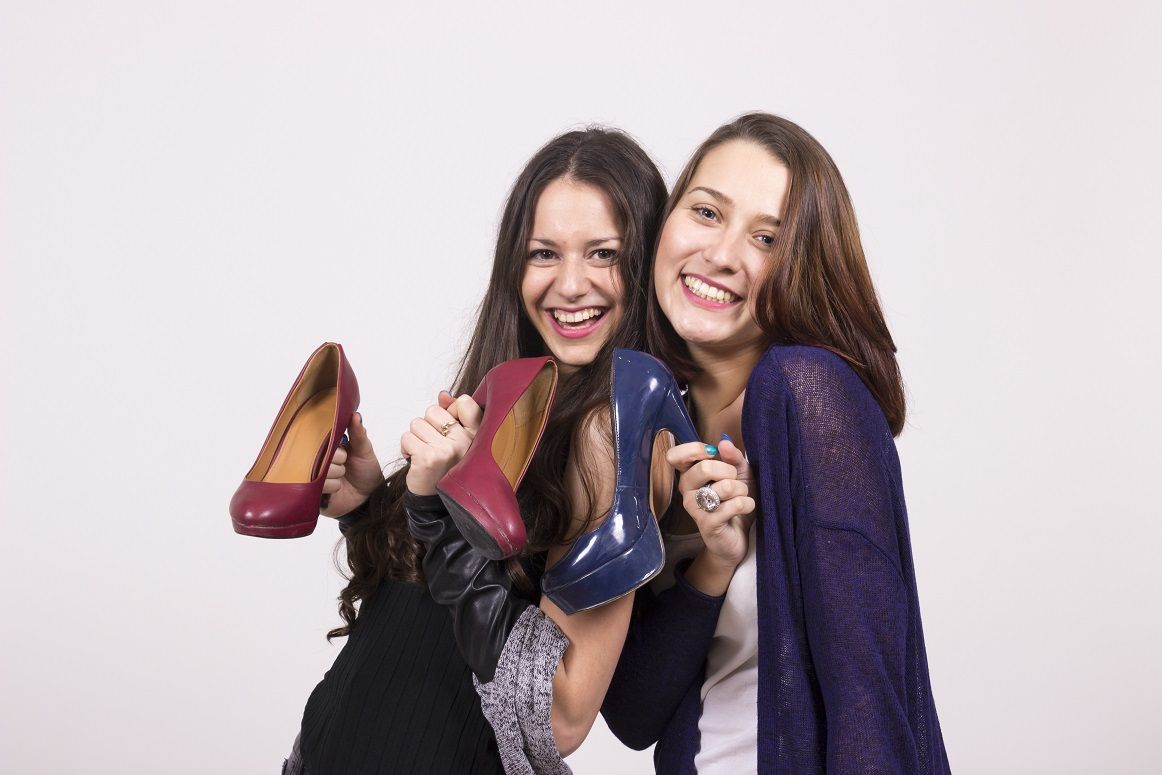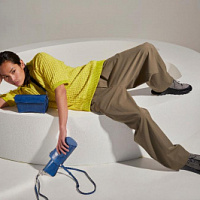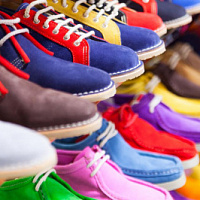
How to define key numbers to make your retail business efficient and profitable

 Kristina Morozova (Wojciechowska) - Certified business coach, Fashion retail expert, general manager of KEDDO in America (New York, USA).
Kristina Morozova (Wojciechowska) - Certified business coach, Fashion retail expert, general manager of KEDDO in America (New York, USA).
We offer to pause and calculate everything.
We highlight 4 of the main numerical indicators that make the retail business successful:
-
The number of incoming customers.
-
Conversion from incoming to those who bought.
-
Average bill.
-
Repeated purchases.
To increase, say, the gross sales turnover, it is worth understanding which criteria are most important to us and which are responsible for the most effective business development. For this, it is worth considering external factors and internal guidelines.
Example 1. The company has a partner who has several shoe stores of the “middle +” segment in a small town, shoes are quite expensive, plus high competition. It is quite obvious that being “one of the usual shoe stores in the city” is a losing concept in advance, so we need to decide what criteria are fundamental to us.
We think logically: the price of the goods is decent, the circle of customers in this segment is limited by the boundaries of a not-so-large city, which means that you need to hold onto each client, shift the maximum benchmark to increase the average bill and repeat purchases, attract the client’s friends, receive recommendations among your friends and conversion from incoming to those who bought. That is, instead of massive advertising throughout the city, we create an internal strong customer loyalty system and promote the store purposefully in our customer base through specialized programs and cross-marketing.
Example 2. An individual entrepreneur has shoe stores in the resort town, where tourists make the main revenue. It is logical that if our guideline is mainly “holiday-makers” and not local residents, then repeated purchases are of little interest to us. The main thing is to attract as many visitors to the store as possible and increase the conversion, perhaps also the average check. This means that all efforts will be devoted to making the shop window dynamic and selling, to advertise in tourist places and to teach sellers to be welcoming and welcoming.

Count customers by head
It’s simple: we fix the entire number of people who went to the store. A permanent assistant for us will be special counters that are installed at the entrance and count how many people have visited you. Standard: 20% is subtracted from the final figure - these are sellers who went out and went in, those who stood at the door and did not go in and others. Do not forget to divide by 2, if the indicator on the equipment does not do it automatically (if a person entered the store, he must exit it). For example: 850 (the figure issued by the counter based on the results of the store’s working day) ÷ 2 = 425 - 20% = 340 people - potential customers who visited for one specific day. It makes sense to analyze the data on different days of the week and hours (to understand the dynamics of demand), in different months (to understand seasonality) and compare the indicators of similar periods for previous years (which will show us the trend of needs in the long term).
What affects the number of visitors?
1. Advertising. It is not enough to give an advertising message to different media, you need to monitor the effectiveness of both the media itself and the advertising message - its quality and relevance for your target audience. Data for analysis can be provided to you by employees of the promotion channel, or you can track yourself how many people came through advertising for some specific distinguishing features: coupon, flyer, code word that was used in the commercial, etc.
2. The appearance of the store (facade, showcase, announcement of current promotions). Look at your store from the side. Does it look attractive, “tasty” for your potential buyers? What sets it apart from others? Why should the visitor choose yours from the many stores? The showcase should attract not only those who have a clear goal - to buy shoes here and now, but also those who just walk or even go about some of their own business not related to shopping. A lot of useful articles have been written about the window dressing of a shoe store, so I wanted to say briefly only that mathematics and specifics are important here. Announcements that the buyer sees should be noticeable, understandable at a glance, it is better if they contain numbers and are limited in time. For example: “1 + 1 = 3 when buying two pairs of shoes, the third - as a gift! Only 3 days / only until 25 July. " Remember: to capture the attention of a potential client passing by you have only 8 (!) Seconds - that’s how much time a person’s attention is focused on a background object.
3. The location of your store. Is your store visible? It happens that the showcase is well designed, the staff is trained, hit models on the shelves, but it’s rather difficult to find the store, it is in an uncomfortable place for pedestrians or drivers, or the facade is blocked by trees, billboards, and other buildings. If this factor affects the number of visitors, it may be worth taking measures - to strengthen advertising, add vivid navigation, and, sometimes, completely change the location to a better one.
4. Word of mouth Especially in small cities, the recommendation of those who have already visited you and made purchases is very important. This item can become for you a gold mine, if you correctly place the emphasis. In this matter, absolutely all components are important: assortment, pricing policy, quality and speed of service, promotions and discounts, customer comfort, convenience of store location, customer loyalty program and many small things that, at first glance, are not so important, but can to do bad service in the future.
IMPORTANT: The “inbox” includes not only people who have visited your store, but also those who called you to inquire about something. Tracking the number of incoming calls, the purpose of each caller and the quality of working with them will help special programs that are simple enough to use and invaluable to improve the quality of service and understanding of customer demand.

How to convert incoming to bought?
Perhaps one of the main indicators of the correct operation of your business machine is the percentage of conversion. Simply put, how many people from those who came to you bought something. Calculating the conversion is easy. Let's say 800 people came to you in a day, bought 55 people from them, which means we multiply 55 by 100 and divide by 800, we get 6,9% - this is our conversion. By the way, a very good conversion for a retail shoe store. A conversion from 6,5% to 10% is considered good, from 4% to 6,5% it is tolerable, but requires some measures (advertising, training, rearrangement, promotions), if the conversion falls below 3,5% - time for radical changes and in-depth analysis .
What affects the conversion:
1. Range. Of course, this is the most important point that you sell, and whether it meets the demand of your customers. Demand analysis is necessary. Sales data, hits, balances, analysis of the assortment of competitors, trends and trends of the fashion market as a whole will help you in this. When analyzing sales, it makes sense to make a summary table in which you can see data on sales in different segments (type of shoes, style, price), in different seasons, months and days of the week. Track the dependence of sales this season on similar months in previous years.
2. Price policy. Where does the final cost come from? In your case, is this a calculated figure or taken "from the ceiling"? The cost of goods, although an important indicator that affects consumer demand, is far from the main one. In most cases, the customer buys his own benefit, and this is not so much a price advantage as a combination of factors affecting the decision “like” or “dislike”. You can dump the price, but you should not take the example of the negative segment or large Internet players who can afford very large discounts. If your business is not built around the “Low Price Highlights” business model, then this is not your tool. Of course, you need to give discounts and promotions, but you should not compete with discounts and accustom customers to the fact that you always have discounts.
3. Service. Of paramount importance when making a customer’s buy-not-buy decision is how much your sellers have (quickly, efficiently, unobtrusively) served the customer. How to teach, motivate and control the work of staff so that everything works like a clock? There are many, many different answers, they can be found in business literature, at numerous trainings for managers and sales staff. The manager should understand the main thing: no matter what skills we require from people, it is important to convey to them our specific expectations. Just activity is a very vague concept for people, but greeting each incoming visitor, establishing contact with each 3 is a very specific expectation and an easily verified requirement. A concrete understanding of what we want from employees will help us find focused methods and tools for educating people.
4. Atmosphere. Few people think about whether it is pleasant for a customer to be in your store. You may have well-trained salespeople, up-to-date shelving models, competitive prices, but some little things - say, it's very cold or hot, bad smell, lack of repair, greasy rugs, dirty mirrors, or even too low ceilings - can distract many from buying and pretty annoying. You can’t even say that you will want to return to such a store only if you really need it.
5. Merchandising. A lot has been said and written about the art of product display, so we will not dwell on this here in detail. It is recommended to take this item into account when analyzing the operation of your store and, if the state does not have its own merchandiser, contact the experts for the necessary information and help.
6. Navigation. Navigation inside the store is no less important than navigation on the way to it. Try to distribute the zones in the store so that the customer, right from the entrance, can quickly and easily find their way and choose the direction he needs. If necessary, order POS materials and place them in the hall in the direction of the buyer.
7. Weather, seasonality. Of course, the retail segment, especially the fashion segment, is very dependent on some external circumstances, for example, on seasonality and weather. These circumstances are taken for granted, it is in our power to accept that sales are lower in certain months, commensurate with the decreasing traffic of the outlet, or, having analyzed the features of the store and the needs of your target audience, come up with ways to increase the attention of customers to your company, stimulating promotions for customers and staff, some, perhaps only your "steps" and finds.

Increasing your average bill is no easy task
The average check is the average sales for one payment transaction: the total amount is divided by the number of checks (arithmetic average). The main information that interests us is the amount of the average check and the number of items in the check. It is these two components that make sense to work out in more detail.
What affects the average bill:
1. Promotions for buying more than one pair of shoes / one product. For the most part - this is advertising and promotion inside the store + the correct layout of the goods. For example, discounts may increase with the purchase of more pairs. Or you can give a gift for a purchase from a certain amount, carry out special promotions on groups of goods.
2. Sale of related products. This position, although inexpensive, but in total can give a very good financial inflow. Check if the related products are available for the buyer’s eyes and if your employees (more often the sale is charged with the duties of cashiers) make efforts to sell the “bundle”, whether everyone is offered care products, wallets, gloves, laces, insoles.
3. Grouping. And once again we return to merchandising. The correct distribution of goods on the trading floor will help not only quickly orientate the customer around the room and pay attention first of all to the goods we need, but also help to sell goods in groups, for example, a scarf to a handbag, a clutch to shoes.
4. The work of sellers. One of the biggest stumbling blocks to increasing the average bill. The seller’s phrase “I see that he doesn’t need anything” robs us of at least 30% of our revenue. Moreover, often a customer buys only one unit of goods just because they are not selling anything else. Remember the dialogue that takes place in almost every store between the buyer and the seller: the seller fulfills the objections, makes sure that the customer is “comfortable, likes, everything fits”, asks the buyer to “go to the cash desk”, where he makes the purchase and says “Goodbye, come again ". That is, they say goodbye to the client instead of offering to continue shopping. What remains for a decent person to do after saying goodbye to him? Just leave.
If you manage on your own or with the help of invited training experts to direct the actions of the staff in the right direction, believe me, a positive result will not take long.
“How glad we are to see you again!”
In a good way, with these words you need to meet every customer who comes to your store again. This is a welcome situation for any seller - to see again and again a smiling, satisfied and, most importantly, customer ready to buy something again. Repeated sales, customers who return to you - you and your team should strive for these goals with all your might.
I would really like to have some kind of magic button or phrase that will make customers come back to you again and again, bring friends and relatives, but, alas, such a button is not yet known to the science of efficient retail. I will take the liberty to declare that this button is in an integrated approach and a detailed study of each of the points listed here, as well as in a clear understanding of the strategy and vision of your business. If everything is in order with this - the matter is small: follow your goal, born of the needs of your target audience, be faithful to your mission and success will definitely come!
This article was published in the 138 issue of the print version of the magazine.
| Please rate the article |
Materials on the topic

Why is it so important to work with customer reviews, analyze them and use them in your work?

How to implement sales funnels in the shoe business

Effective methods that will help improve the effectiveness of sellers

Service in the store: successes and mistakes

How to determine the amount of shoe purchases for the next season?
Popular
 Coach turned to Big Data analysis and won the interest of a young audience
American handbag brand Coach has planned the success of its Tabby model among a younger audience, Generation Z, by turning to big data analysis, abandoning traditional and analogue tools, such as human intuition or the ability of any executive to sense “which way the wind will blow,” writes B.O.F.
Coach turned to Big Data analysis and won the interest of a young audience
American handbag brand Coach has planned the success of its Tabby model among a younger audience, Generation Z, by turning to big data analysis, abandoning traditional and analogue tools, such as human intuition or the ability of any executive to sense “which way the wind will blow,” writes B.O.F.
 IDOL updates the concept
The IDOL brand, part of the Melon Fashion Group portfolio, opened the first flagship in an updated concept in the Aviapark shopping center in Moscow.
IDOL updates the concept
The IDOL brand, part of the Melon Fashion Group portfolio, opened the first flagship in an updated concept in the Aviapark shopping center in Moscow.
 Louis Vuitton opens a new factory in Italy
Louis Vuitton has opened its second shoe factory in Italy. After opening the first one in Fiesso d'Artico in Veneto, the LVMH flagship brand has just opened a new production site dedicated to this category of footwear in the industrial zone of Civitano in the Marche region. There is also another brand production facility in Tuscany, where bags and leather accessories are produced, writes fr.fashionnetwork.com.
Louis Vuitton opens a new factory in Italy
Louis Vuitton has opened its second shoe factory in Italy. After opening the first one in Fiesso d'Artico in Veneto, the LVMH flagship brand has just opened a new production site dedicated to this category of footwear in the industrial zone of Civitano in the Marche region. There is also another brand production facility in Tuscany, where bags and leather accessories are produced, writes fr.fashionnetwork.com.
 The Euro Shoes@CAF exhibition will be held in Almaty
From March 11 to 13, the Euro Shoes@CAF (Central Asia Fashion) exhibition will be held in Almaty at the Atakent exhibition complex. The exhibition, which is the largest international event in the fashion industry in Central Asia, will present collections of clothing, shoes and accessories.
The Euro Shoes@CAF exhibition will be held in Almaty
From March 11 to 13, the Euro Shoes@CAF (Central Asia Fashion) exhibition will be held in Almaty at the Atakent exhibition complex. The exhibition, which is the largest international event in the fashion industry in Central Asia, will present collections of clothing, shoes and accessories.
 Euro Shoes will start operating on February 19 in Moscow!
The winter session of the international exhibition of footwear and accessories Euro Shoes premiere collection will be held in Moscow at the Expocenter from February 19 to 22. The organizers promise the presence of all the main participants at the exhibition, as well as new names from Europe, Asia and Russia.
Euro Shoes will start operating on February 19 in Moscow!
The winter session of the international exhibition of footwear and accessories Euro Shoes premiere collection will be held in Moscow at the Expocenter from February 19 to 22. The organizers promise the presence of all the main participants at the exhibition, as well as new names from Europe, Asia and Russia.
 American buyers couldn't buy Birkin bags and sued Hermès
French fashion house Hermès is facing a lawsuit in California from two customers who were unable to purchase exclusive Birkin bags. The fashion house is accused of unfair commercial practices.
American buyers couldn't buy Birkin bags and sued Hermès
French fashion house Hermès is facing a lawsuit in California from two customers who were unable to purchase exclusive Birkin bags. The fashion house is accused of unfair commercial practices.
 Why Rendez-Vous and Yandex Lavka released a “bread bag”
Shoe retailer Rendez-Vous announced the launch of a spring collaboration with Yandex Lavka and released a roll that resembles the shape of a woman’s handbag. This “Bread Bag” is presented in the Yandex.Lavka application at a price of 249 rubles. On the product packaging there is a promotional code for 1000 rubles, which can be spent in the Rendez-Vous network.
Why Rendez-Vous and Yandex Lavka released a “bread bag”
Shoe retailer Rendez-Vous announced the launch of a spring collaboration with Yandex Lavka and released a roll that resembles the shape of a woman’s handbag. This “Bread Bag” is presented in the Yandex.Lavka application at a price of 249 rubles. On the product packaging there is a promotional code for 1000 rubles, which can be spent in the Rendez-Vous network.
 Camper has released innovative sneakers - designers
Spanish brand Camper's new Roku sneaker features six interchangeable components to create up to 64 different looks and color combinations. Roku means "six" in Japanese.
Camper has released innovative sneakers - designers
Spanish brand Camper's new Roku sneaker features six interchangeable components to create up to 64 different looks and color combinations. Roku means "six" in Japanese.
 Christian Louboutin presented a collection in a cowboy style
At the Loubi Show in Paris, the French luxury brand Christian Louboutin presented its fall 2024 collection, following the trend - in the style of the Wild West. It included cowboy boots and rhinestone loafers.
Christian Louboutin presented a collection in a cowboy style
At the Loubi Show in Paris, the French luxury brand Christian Louboutin presented its fall 2024 collection, following the trend - in the style of the Wild West. It included cowboy boots and rhinestone loafers.
 Fashion Week takes place in Moscow
Fashion Week takes place in the Russian capital. Events include fashion shows, markets where you can purchase clothes, bags and accessories, and a B2B Showroom for fashion industry professionals.
Fashion Week takes place in Moscow
Fashion Week takes place in the Russian capital. Events include fashion shows, markets where you can purchase clothes, bags and accessories, and a B2B Showroom for fashion industry professionals.
 Turkish brand Vaneda on Euro Shoes
Street style, sport, outdoor, military – the main style directions of footwear of the company from Turkey
Turkish brand Vaneda on Euro Shoes
Street style, sport, outdoor, military – the main style directions of footwear of the company from Turkey
 Kari accuses Zenden of unfair competition and is suing the FAS
The largest Russian shoe chain, Kari, appealed to the Moscow Arbitration Court to declare the actions of the Federal Antimonopoly Service (FAS) illegal, writes RBC.
Kari accuses Zenden of unfair competition and is suing the FAS
The largest Russian shoe chain, Kari, appealed to the Moscow Arbitration Court to declare the actions of the Federal Antimonopoly Service (FAS) illegal, writes RBC.
 Fashion trends Fall-Winter 2023/24 for commercial footwear purchases
Permanent contributor to Shoes Report. Elena Vinogradova, an expert in sales and purchases in the fashion business, prepared an overview of the trends for the autumn-winter 2023/24 season especially for us.
Fashion trends Fall-Winter 2023/24 for commercial footwear purchases
Permanent contributor to Shoes Report. Elena Vinogradova, an expert in sales and purchases in the fashion business, prepared an overview of the trends for the autumn-winter 2023/24 season especially for us.
 MSCHF and Crocs launch "Big Yellow Boots"
Creator of the Big Red Boots, Brooklyn brand MSCHF has teamed up with American plastic clog and sandal brand Crocs for another oversized shoe. The new Big Yellow Boots will go on sale on August 9th.
MSCHF and Crocs launch "Big Yellow Boots"
Creator of the Big Red Boots, Brooklyn brand MSCHF has teamed up with American plastic clog and sandal brand Crocs for another oversized shoe. The new Big Yellow Boots will go on sale on August 9th.
 Five rules of professional lighting for a shoe store - something that is relevant in any season
When developing a lighting concept for shoe retailers, it is important to take into account not only the history of the brand, the architectural content of the premises, the target audience of the stores, but also the seasonality of the goods. With the onset of the cold season, client preferences change: bright weightless shoes are replaced by more massive models in discreet dark colors. Despite significant differences in summer and winter collections, the overall philosophy of the brand, its recognition should remain unchanged at any time of the year. Tatyana Ryzhova, an SR lighting expert in fashion retail, has identified five basic rules for a competent lighting concept for a shoe store for readers of the magazine, which will help to present winter assortment to customers in a winning way.
Five rules of professional lighting for a shoe store - something that is relevant in any season
When developing a lighting concept for shoe retailers, it is important to take into account not only the history of the brand, the architectural content of the premises, the target audience of the stores, but also the seasonality of the goods. With the onset of the cold season, client preferences change: bright weightless shoes are replaced by more massive models in discreet dark colors. Despite significant differences in summer and winter collections, the overall philosophy of the brand, its recognition should remain unchanged at any time of the year. Tatyana Ryzhova, an SR lighting expert in fashion retail, has identified five basic rules for a competent lighting concept for a shoe store for readers of the magazine, which will help to present winter assortment to customers in a winning way.
 Bertsy: what to look for when choosing a model
Bertsy and tactical boots are becoming more and more relevant footwear, and not only because of the start of the hunting season. In Russia, there are several dozen enterprises producing this type of footwear. Oleg Tereshin, Deputy Chief Technologist of ZENDEN, told Shoes Report about the differences and features of ankle boots and what you should pay attention to when buying them in specialized retail and online.
Bertsy: what to look for when choosing a model
Bertsy and tactical boots are becoming more and more relevant footwear, and not only because of the start of the hunting season. In Russia, there are several dozen enterprises producing this type of footwear. Oleg Tereshin, Deputy Chief Technologist of ZENDEN, told Shoes Report about the differences and features of ankle boots and what you should pay attention to when buying them in specialized retail and online.
 I doubt and object: how to find an approach to difficult clients?
How good and serene would be the work of a salesperson if the customers were calm, cheerful, always knew exactly what they wanted, and bought, bought, bought! It is a pity that this is possible only in dreams. Therefore, we will not dream, but we will act. Together with Maria Gerasimenko, a permanent author of SR, we understand the doubts and objections of buyers and build a strategy for working with them. Our expert pays special attention to the two main objections of buyers, on which 82% of sales are lost.
I doubt and object: how to find an approach to difficult clients?
How good and serene would be the work of a salesperson if the customers were calm, cheerful, always knew exactly what they wanted, and bought, bought, bought! It is a pity that this is possible only in dreams. Therefore, we will not dream, but we will act. Together with Maria Gerasimenko, a permanent author of SR, we understand the doubts and objections of buyers and build a strategy for working with them. Our expert pays special attention to the two main objections of buyers, on which 82% of sales are lost.
 EURO SHOES presents an updated section of the GLOBAL SHOES exhibition with collections of shoe and bag brands from Asian countries
EURO SHOES premiere collection is expanding. Along with the traditional pool of leading European footwear brands from Germany, Spain, Italy and Turkey, several dozen footwear and bag brands from the Middle Kingdom will be presented in the GLOBAL SHOES section at the Moscow Expocentre from August 29 to September 1.
EURO SHOES presents an updated section of the GLOBAL SHOES exhibition with collections of shoe and bag brands from Asian countries
EURO SHOES premiere collection is expanding. Along with the traditional pool of leading European footwear brands from Germany, Spain, Italy and Turkey, several dozen footwear and bag brands from the Middle Kingdom will be presented in the GLOBAL SHOES section at the Moscow Expocentre from August 29 to September 1.
 Two prominent Russian fashion designers Vyacheslav Zaitsev and Valentin Yudashkin passed away
One after another, two days apart, Vyacheslav Zaitsev and Valentin Yudashkin, outstanding fashion designers, whose work for the whole world was a kind of hallmark of fashionable Russia, left this world.
Two prominent Russian fashion designers Vyacheslav Zaitsev and Valentin Yudashkin passed away
One after another, two days apart, Vyacheslav Zaitsev and Valentin Yudashkin, outstanding fashion designers, whose work for the whole world was a kind of hallmark of fashionable Russia, left this world.
 World Footwear Yearbook: Global footwear production reaches 23,9 billion pairs and is back to pre-pandemic levels
The Portuguese association of shoe manufacturers APICCAPS published the 13th edition of the international statistical bulletin World Footwear Yearbook for 2023, according to which in 2022 the production and export of shoes worldwide increased by 7,6% and 9%, respectively, and the world production of shoes reached 23,9 billion couples and returned to pre-pandemic levels.
World Footwear Yearbook: Global footwear production reaches 23,9 billion pairs and is back to pre-pandemic levels
The Portuguese association of shoe manufacturers APICCAPS published the 13th edition of the international statistical bulletin World Footwear Yearbook for 2023, according to which in 2022 the production and export of shoes worldwide increased by 7,6% and 9%, respectively, and the world production of shoes reached 23,9 billion couples and returned to pre-pandemic levels.
 Rostov footwear brand Novak presented a collection of sneakers and sneakers
In the spring-summer 2023 season, the Rostov-on-Don shoe brand Novak presented a cute collection of sneakers and sneakers for every day. The upper of the shoe is made of genuine leather, suede, nubuck, the sole is made of light EVA.
Rostov footwear brand Novak presented a collection of sneakers and sneakers
In the spring-summer 2023 season, the Rostov-on-Don shoe brand Novak presented a cute collection of sneakers and sneakers for every day. The upper of the shoe is made of genuine leather, suede, nubuck, the sole is made of light EVA.
 How to create selling visual content for online based on the identified unique selling proposition?
What is a USP (unique selling proposition) and what is it for? Why is the USP creation service in great demand among fashion retailers today? How to create a working USP? Answers questions and provides step-by-step guidance on how to define your unique selling proposition and work with it to increase online sales, Tatyana Vasilyeva, an SR expert in the promotion and development of fashion brands.
How to create selling visual content for online based on the identified unique selling proposition?
What is a USP (unique selling proposition) and what is it for? Why is the USP creation service in great demand among fashion retailers today? How to create a working USP? Answers questions and provides step-by-step guidance on how to define your unique selling proposition and work with it to increase online sales, Tatyana Vasilyeva, an SR expert in the promotion and development of fashion brands.
 Shoe educational program: what shoe soles are made of
“What is the difference between TEP and EVA? What does tunit promise me? Is PVC glue? What is the sole of these shoes made of? ”- the modern buyer wants to know everything. In order not to smash his face in front of him and be able to explain whether such a sole suits him in soles, carefully read this article. In it, process engineer Igor Okorokov tells what materials the soles of shoes are made of and what makes each of them so good.
Shoe educational program: what shoe soles are made of
“What is the difference between TEP and EVA? What does tunit promise me? Is PVC glue? What is the sole of these shoes made of? ”- the modern buyer wants to know everything. In order not to smash his face in front of him and be able to explain whether such a sole suits him in soles, carefully read this article. In it, process engineer Igor Okorokov tells what materials the soles of shoes are made of and what makes each of them so good.
 How to set prices that will earn
Some businessmen still confuse the concept of margin with the concept of trade margins and set prices for their goods, guided solely by the example of competitors. No wonder they go broke! Analyst at the Academy of Retail Technologies Maxim Gorshkov gives several tips and formulas with which you can set not only ruinous, but also profitable prices.
How to set prices that will earn
Some businessmen still confuse the concept of margin with the concept of trade margins and set prices for their goods, guided solely by the example of competitors. No wonder they go broke! Analyst at the Academy of Retail Technologies Maxim Gorshkov gives several tips and formulas with which you can set not only ruinous, but also profitable prices.
 Sales of shoes and accessories: effective techniques for business rhetoric
Which speech modules are effective in communicating with potential and current customers of shoe stores, and which are not, Anna Bocharova, a business consultant, knows.
Sales of shoes and accessories: effective techniques for business rhetoric
Which speech modules are effective in communicating with potential and current customers of shoe stores, and which are not, Anna Bocharova, a business consultant, knows.
 We form the salary of sellers: expert advice
“How do you charge your consultants for personal or general sales?” Is one of the most popular questions causing a lot of controversy and gossip on the online forums of retail business owners. Indeed, how to properly form the earnings of sellers? But what about bonuses, where to get a sales plan from, do employees allow them to buy goods at discounted stores? In search of truth, the Shoes Report turned to a dozen shoe retailers, but no company wanted to disclose its motivation system - the process of its development was too complicated and individual. Then we asked four business consultants, and finally became convinced that the topic of seller motivation is very complex, because even our experts could not come to a common opinion.
We form the salary of sellers: expert advice
“How do you charge your consultants for personal or general sales?” Is one of the most popular questions causing a lot of controversy and gossip on the online forums of retail business owners. Indeed, how to properly form the earnings of sellers? But what about bonuses, where to get a sales plan from, do employees allow them to buy goods at discounted stores? In search of truth, the Shoes Report turned to a dozen shoe retailers, but no company wanted to disclose its motivation system - the process of its development was too complicated and individual. Then we asked four business consultants, and finally became convinced that the topic of seller motivation is very complex, because even our experts could not come to a common opinion.
 The whole truth about Bayer. Who is he and how to become one?
Bayer is no longer a new, but still a popular and sought-after profession. It’s fashionable to be a buyer. Buyers are at the origins of the emergence and development of trends. If the designer offers his vision of fashion in the season, then the buyer selects the most interesting commercial ideas. It is on buyers that the policy of sales of stores and what, in the end, the buyer will wear depends on. This profession is surrounded by a magical fleur, often associated with a lack of understanding of what exactly is the work of a buyer.
The whole truth about Bayer. Who is he and how to become one?
Bayer is no longer a new, but still a popular and sought-after profession. It’s fashionable to be a buyer. Buyers are at the origins of the emergence and development of trends. If the designer offers his vision of fashion in the season, then the buyer selects the most interesting commercial ideas. It is on buyers that the policy of sales of stores and what, in the end, the buyer will wear depends on. This profession is surrounded by a magical fleur, often associated with a lack of understanding of what exactly is the work of a buyer.
 Technology Selling Issues
There is nothing worse than meeting the buyer with the words “Hello, can I help you with something?”, Because the seller works in the store just to help. Criticizing this well-established pattern of communication with the buyer, Andrei Chirkarev, business coach for effective sales and the founder of the New Economy project, shares the technology of truly selling issues with readers of Shoes Report.
Technology Selling Issues
There is nothing worse than meeting the buyer with the words “Hello, can I help you with something?”, Because the seller works in the store just to help. Criticizing this well-established pattern of communication with the buyer, Andrei Chirkarev, business coach for effective sales and the founder of the New Economy project, shares the technology of truly selling issues with readers of Shoes Report.
 Fur, and not only: types of lining
In the production of winter footwear, various materials are used that are designed to retain heat and meet the requirements of consumers: natural sheepleather, artificial fur, artificial fur from natural wool and others. All types of lining fur have their own advantages and disadvantages. Let's consider the properties of each of them.
Fur, and not only: types of lining
In the production of winter footwear, various materials are used that are designed to retain heat and meet the requirements of consumers: natural sheepleather, artificial fur, artificial fur from natural wool and others. All types of lining fur have their own advantages and disadvantages. Let's consider the properties of each of them.
 Retail Arithmetic
Before you begin to solve specific problems, you need to find out how accurately all the leaders of your company understand the basic terminology of retail.
Retail Arithmetic
Before you begin to solve specific problems, you need to find out how accurately all the leaders of your company understand the basic terminology of retail.
 How to fire a worker without tears, scandal and trial
Sooner or later, any manager is faced with the need to part with an employee. Properly and on time the dismissal procedure will save the company money, and the boss himself - nerves and time. But why sometimes, knowing that a break in relations is inevitable, we put off the decision for months?
How to fire a worker without tears, scandal and trial
Sooner or later, any manager is faced with the need to part with an employee. Properly and on time the dismissal procedure will save the company money, and the boss himself - nerves and time. But why sometimes, knowing that a break in relations is inevitable, we put off the decision for months?






